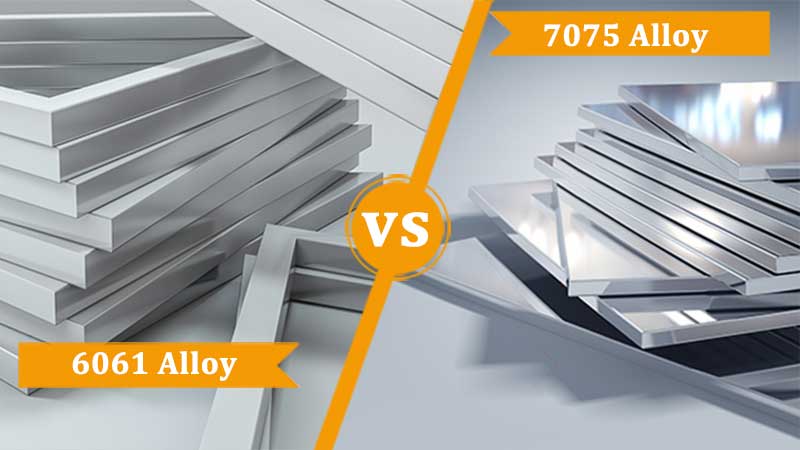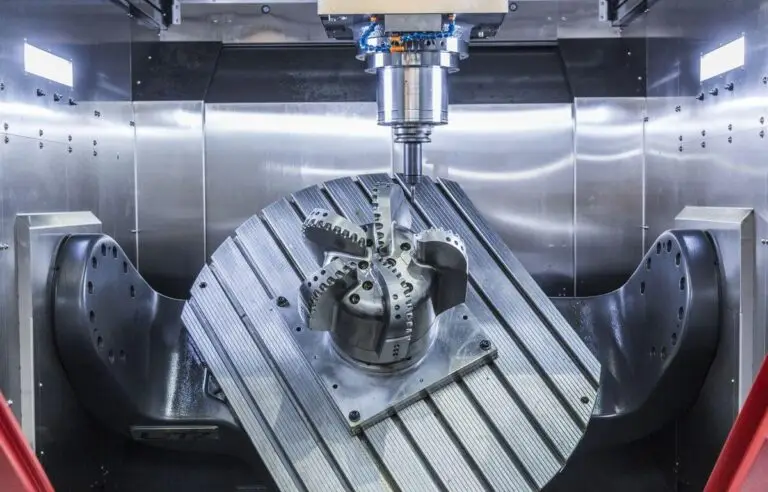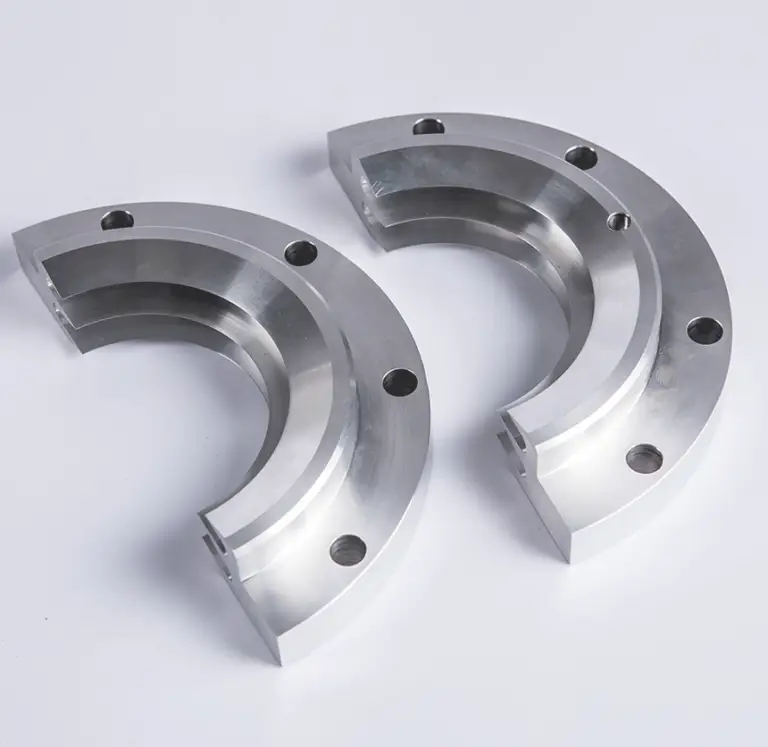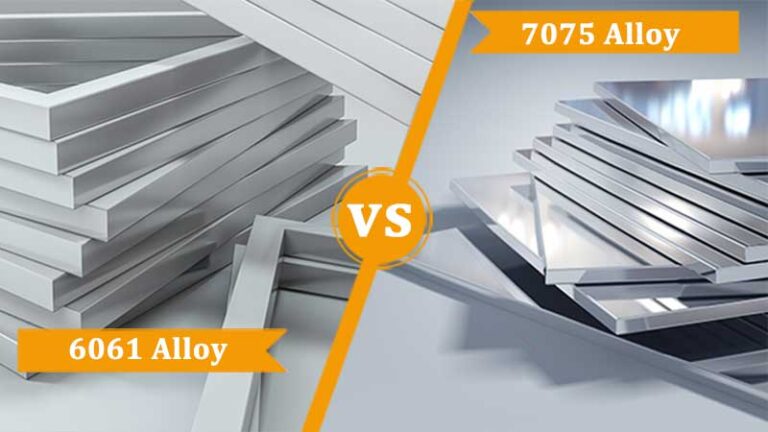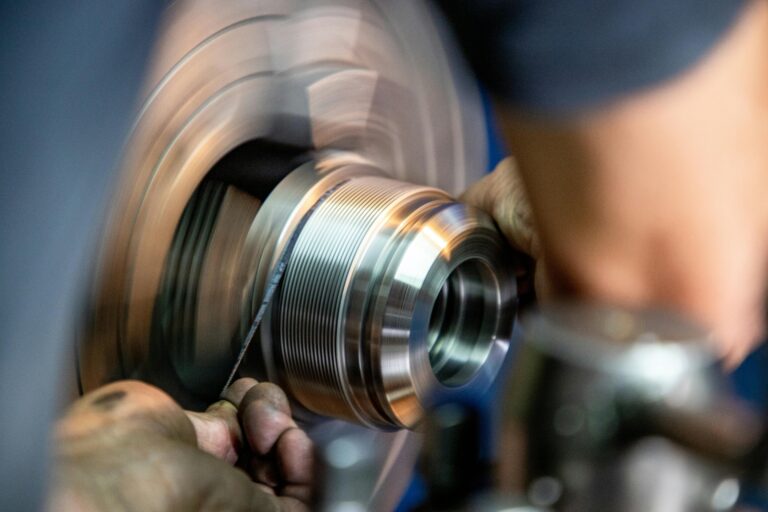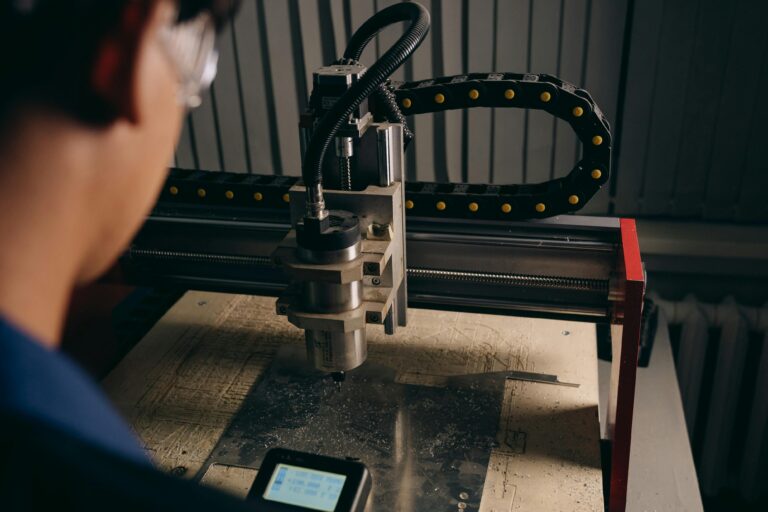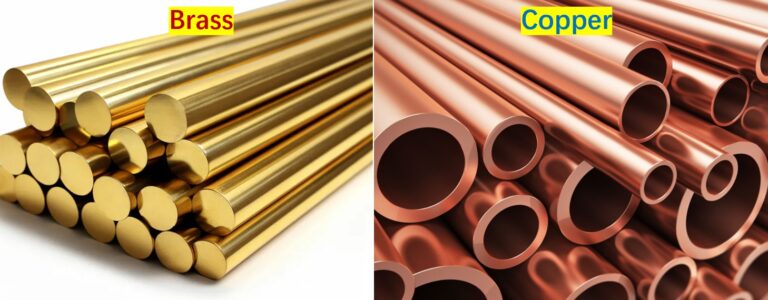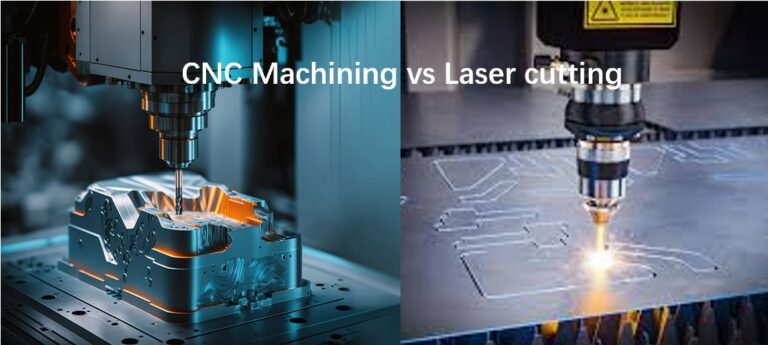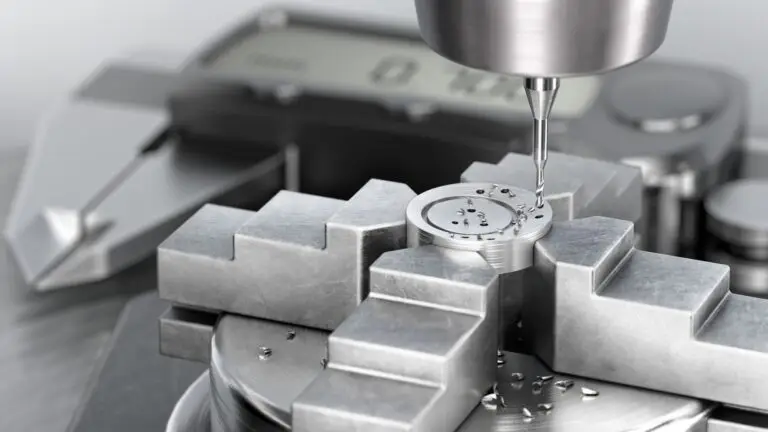Aluminum is one of the most widely used materials in CNC machining, and two of the most common grades are 6061 and 7075. Both are heat-treatable alloys with proven performance across industries, yet they differ significantly in composition, strength, machinability, and corrosion behavior. Choosing the right one depends on whether your project values strength above all else, or versatility and cost-efficiency.
Chemical Composition
6061 belongs to the 6xxx series, where magnesium and silicon are the primary alloying elements. This chemistry gives it good corrosion resistance, excellent weldability, and balanced mechanical strength.
7075 is part of the 7xxx family, dominated by zinc with copper and magnesium. This results in much higher strength and hardness, but also reduces weldability and increases susceptibility to stress corrosion.
| Element | 7075 Aluminum | 6061 Aluminum |
|---|---|---|
| Aluminum (Al) | ~90.0% | ~97.9% |
| Zinc (Zn) | 5.6% | — |
| Magnesium (Mg) | 2.5% | 1.0% |
| Copper (Cu) | 1.6% | 0.28% |
| Silicon (Si) | — | 0.6% |
| Chromium (Cr) | 0.23% | 0.2% |
This difference in chemistry explains why 7075 is stronger but harder to weld, while 6061 balances strength with easier processing.
Mechanical Strength and Fatigue Resistance
In the T6 temper, 7075 reaches ~570 MPa tensile strength and ~490 MPa yield strength, almost double the ~310/270 MPa of 6061-T6. It is also significantly harder (150 BHN vs. 95 BHN). Shear strength of 7075-T6 is roughly 1.5 times higher than 6061-T6.
Fatigue resistance also favors 7075, making it the choice for aerospace frames, structural members, and components that face cyclic loading. 6061 remains reliable for many engineering parts but will not match 7075’s endurance under repeated stress.
Machinability and Surface Finish
6061 is the easier alloy to machine. It cuts smoothly, tolerates higher feeds, and achieves better surface finishes with less post-processing. For cosmetic parts or tight surface callouts, it is usually preferred.
7075 machines harder. It requires sharper tooling, slower feeds, and sometimes spring passes or additional finishing to meet tolerance. One advantage is that its chips break cleanly, while 6061 can produce gummy chips if not managed with proper speeds, feeds, and coolant.
Formability and Weldability
6061 offers good formability and is widely used in bent, extruded, or welded structures. It welds successfully with TIG and MIG, retaining much of its strength.
7075, with higher zinc and hardness, is less formable and generally unweldable in structural applications. In the annealed condition, it can be formed and welded with post-heat treatment, but most designs avoid welding and use mechanical fastening instead.
Corrosion Resistance and Finishing
6061 naturally resists corrosion in outdoor and marine environments, thanks to its stable oxide layer. It is widely used in shipbuilding, marine fittings, and outdoor structures.
7075 is more vulnerable, especially in moist or salty conditions, due to its copper and zinc content. It often requires coatings, anodizing, or sealing for protection. Anodizing both alloys is possible: 6061 produces consistent clear oxide layers, while 7075 may discolor to brown if zinc levels are high.
Industry standards rate corrosion performance on an A–E scale (A = excellent). In seawater, 6061 earns B ratings while 7075 often falls to C or D, meaning it requires added protection.
Thermal and Physical Properties
| Property | 6061-T6 | 7075-T6 | Notes |
|---|---|---|---|
| Density | 2.70 g/cm³ | 2.81 g/cm³ | 7075 is slightly heavier |
| Tensile Strength | ~310 MPa | ~570 MPa | 7075 is ~84% stronger |
| Yield Strength | ~270 MPa | ~490 MPa | 7075 is ~81% stronger |
| Hardness (BHN) | ~95 | ~150 | 7075 is harder |
| Elastic Modulus | 68.9 GPa | 71.7 GPa | Slightly higher for 7075 |
| Thermal Conductivity | 151–202 W/m·K | 130–150 W/m·K | 6061 dissipates heat better |
| Electrical Resistivity | 3.99 µΩ·cm | 5.15 µΩ·cm | 6061 conducts electricity better |
| Melting Range | 582–652°C | 477–635°C | 7075 melts slightly lower |
These differences matter in machining and design. 6061’s higher thermal conductivity makes it more stable under heat and helps avoid thermal distortion. 7075, with its higher strength-to-weight ratio, dominates in load-bearing structures despite being slightly denser.
Applications
7075 aluminum is often called “aircraft grade” and is found in aerospace, missiles, defense hardware, and high-performance sporting goods. It excels when high strength and fatigue resistance matter most.
6061 aluminum is one of the most versatile grades, used in:
- Shipbuilding: sailboats, yachts, marine fittings, and hardware
- Automotive: truck and bus bodies, wheels, brakes, pistons
- Aerospace fittings and secondary structures
- Railway cars and components
- Furniture, moldings, and awnings
- Appliance fittings and consumer goods
- Food and beverage cans
Its wide availability in bar, plate, and extrusion forms makes it a practical default for general CNC machining.
Cost and Practical Considerations
7075 usually costs more, and its limited stock forms or sizes can drive up lead times. Tooling costs are higher due to wear and conservative feeds. For projects where ultimate strength is not mandatory, 6061 is the more economical option.
In practice, many teams prototype in 6061 for ease of machining and cost, then switch to 7075 once the design is validated for performance.
Choosing Between 6061 and 7075
- Choose 7075 when: maximum strength, fatigue resistance, and load capacity are critical.
- Choose 6061 when: corrosion resistance, weldability, machinability, and cost efficiency are more important.
Both alloys are valuable in CNC machining. The right choice depends on your balance of performance, budget, and environment.

